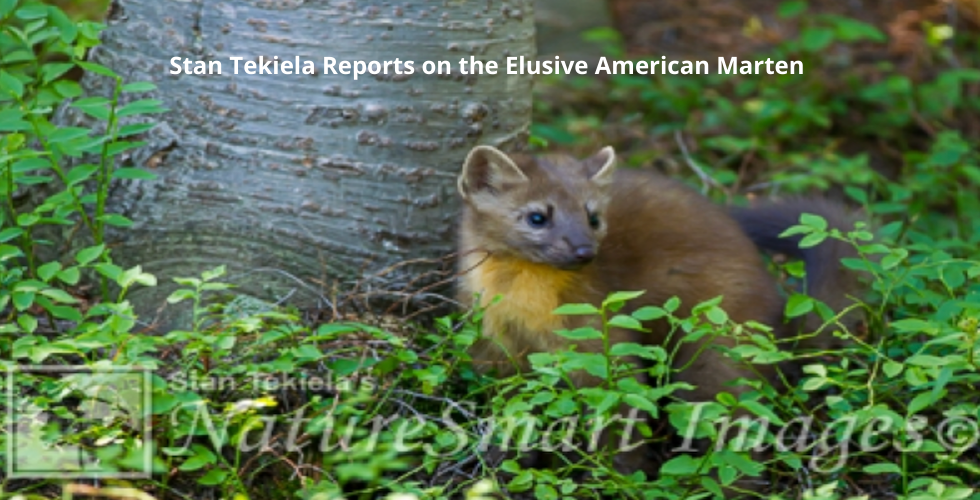
Photographing the Elusive American Marten
For days, Stan Tekiela spent hours and hours searching high and low, looking for the elusive little predator known as the American Marten. Here is his story.
I could see its tracks leading from one tree to another. Hundreds and hundreds of tracks, both fresh and several days old. Then one day, I got a tip about a location that might allow me to see the half-pint predator, so I gathered my photo group and took off in search of the Pine Marten, also called the American Marten (Martes americana).
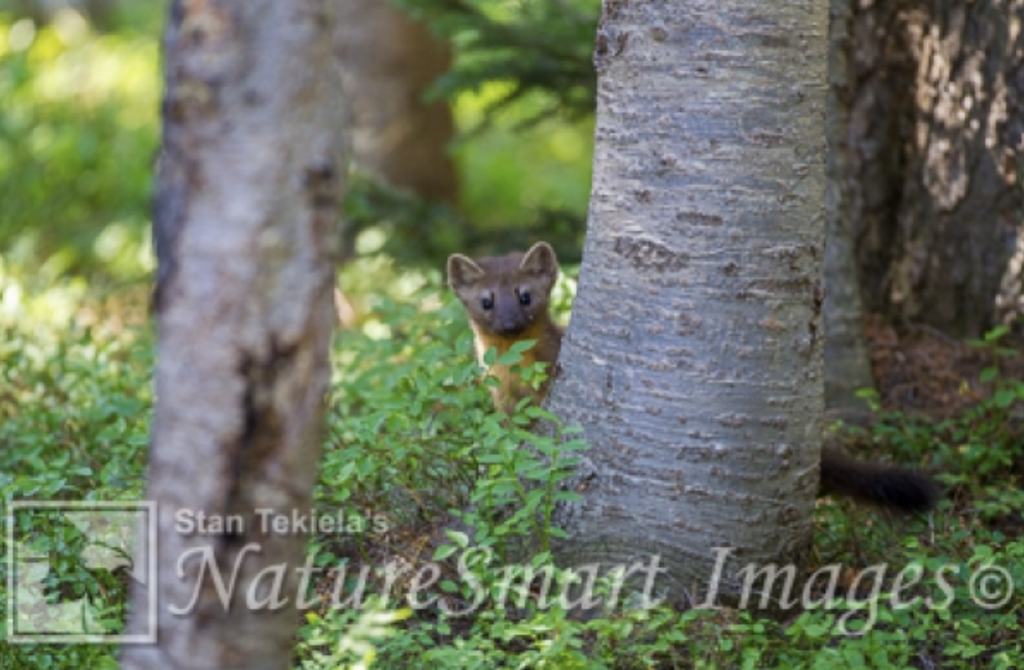
Pine Martens are members of the Mustelidae (weasel) family and are directly related to other critters such as the badger, otter, ferret, mink, fisher, and wolverine. The Pine Marten is sometimes confused with the Fisher (Pekania pennanti), which is much larger and darker in color.
The American Marten is found in northern parts of North America but reaches down the Rocky Mountains in the western states. The species lives in conifer forests, often in rugged habitats with cold and snowy winters, so Yellowstone is a great place to see Pine Martens.
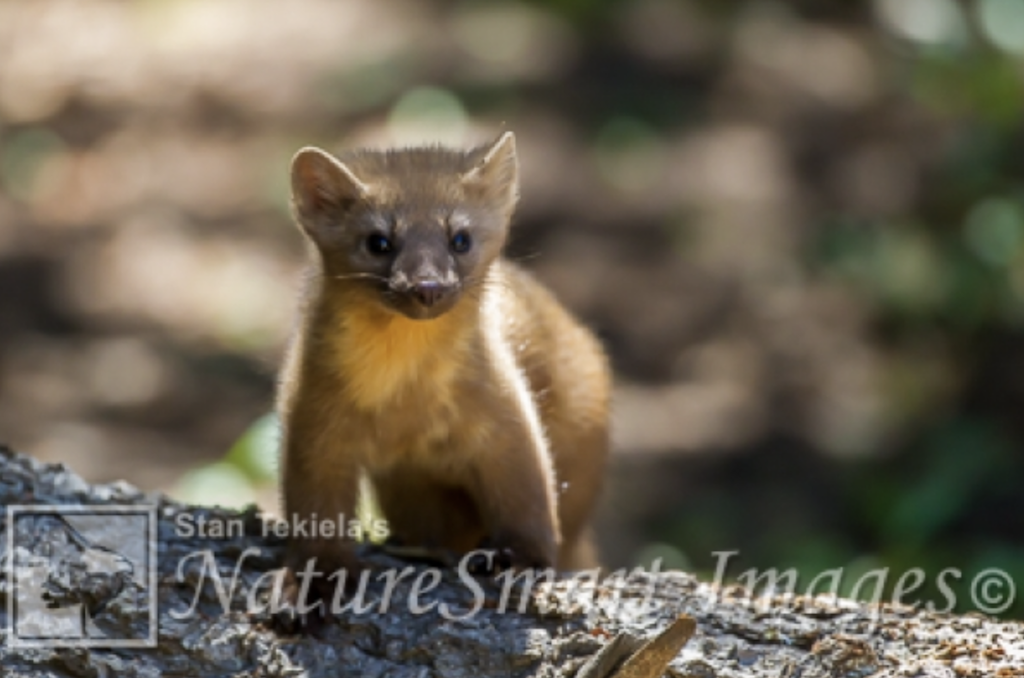
They are long, slender-bodied weasels, slightly larger than minks, with much bushier tails. They have short, round ears that are gray to nearly white that stand out against their tan faces. They have long, bushy tails similar to squirrels and can climb trees nearly as well as squirrels. In fact, squirrels are one of their top menu items.
Upon arrival in the general area, I went ahead to scout it out. I stood in the cold and snow, looking for any movement and listening for any sound that might alert me to a Pine Marten. Thirty minutes later I gave up and went back to my photo group. No Marten today.
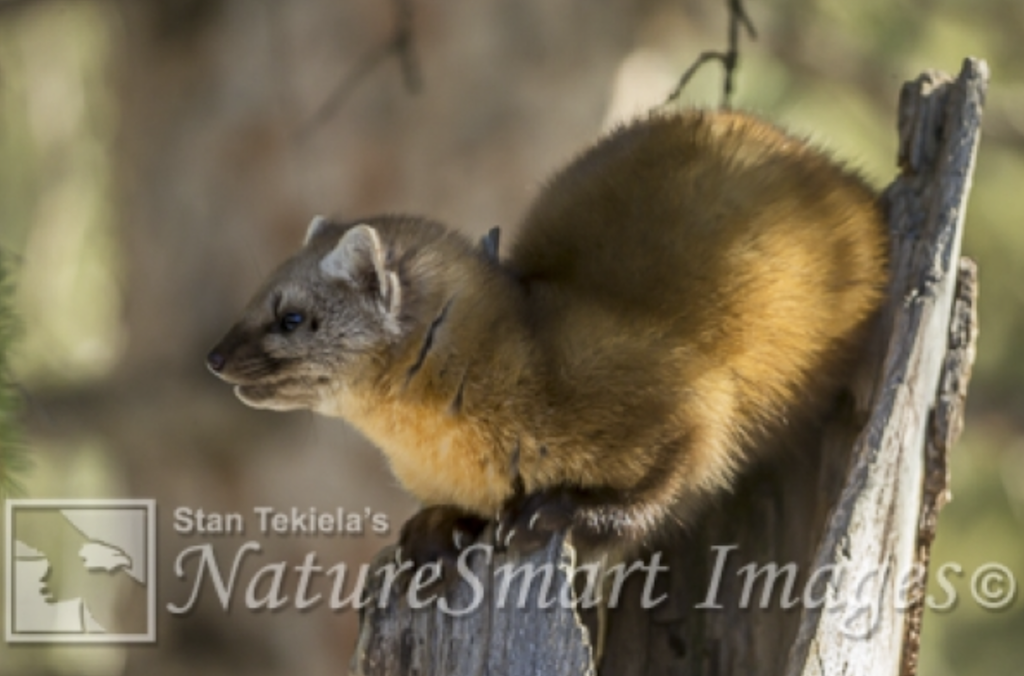
The following week I took my group back to the same area to take another look. This time, several members of the group came with me, and we stood in the snow and cold—waiting. Twenty minutes went by and nothing. Just about the time we were going to give up, someone in the group spotted the Pine Marten sticking its head out of the snow.
Everyone tried to capture some pictures as the small weasel ran from tree to tree, then jumped up into the higher branches before springing from tree to tree like a squirrel. We didn’t stand a chance at capturing any images of this incredibly fast-moving critter. Then, suddenly, it was gone. No one saw where it went. It just disappeared. We looked and waited for a while before, once again, we were about to give up when someone spotted it about 100 feet away.
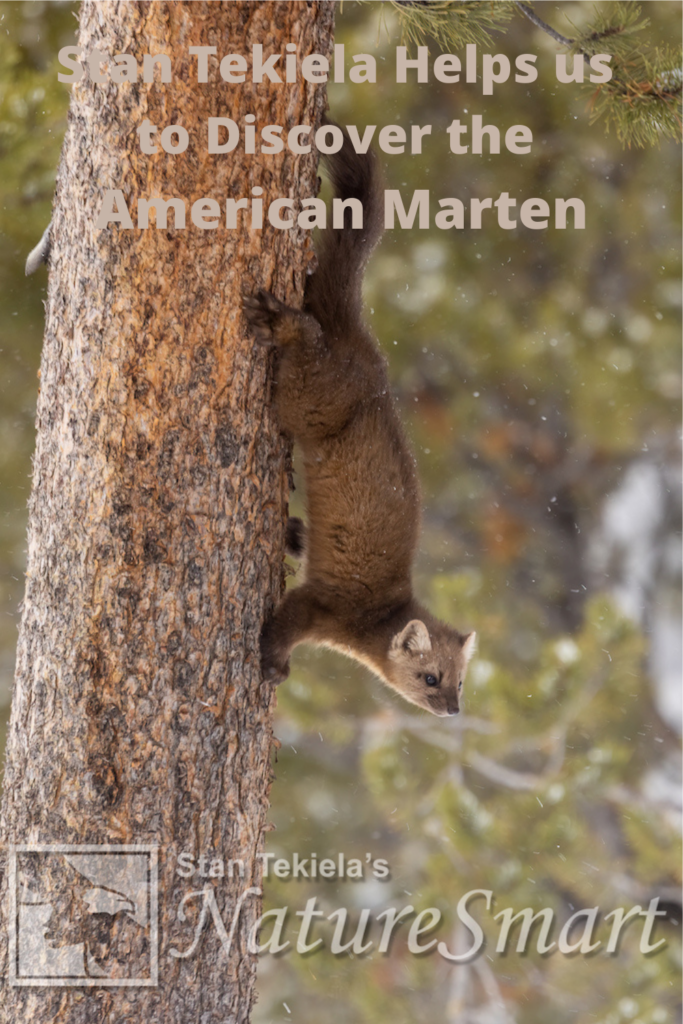
The critter was near the top of another tree nearby. I moved down a narrow, well-worn path in the snow, hoping it might come in my direction. As it moved to the bottom of the tree where the trunk didn’t have any branches, it came out in the open for just a split second. I lifted my camera, acquired focus, and rattled off as many shots as I could before it dropped to the snow and was gone once again.
It was a very brief yet extremely thrilling moment; it resulted in just two of my images that are sharp enough and worth keeping. The sun was setting, and we had several hours ahead of us to get back to our lodging. Everyone was happy to see this small, lesser-known predator of Yellowstone National Park in the winter.
If you enjoyed Stan’s post, you may enjoy one of his amazing nature books: Wild Birds, Backyard Birds: Welcomed Guests at our Gardens and Feeders, and Bald Eagles: The Ultimate Raptors.
You can follow Stan on Facebook and Twitter, or contact him via his web page. Stan’s nationally syndicated NatureSmart Column appears in more than 25 cities spanning 5 states (Minnesota, Wisconsin, Michigan, Illinois, and Pennsylvania) and is circulated to more than 750,000 readers.
For more stories about wildlife and nature, sign up for our newsletter now!


